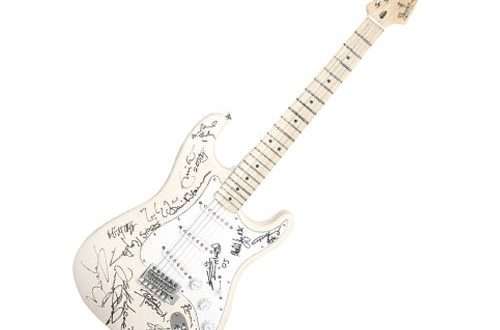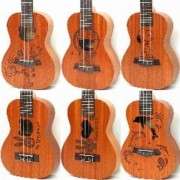How to choose guitar strings?
Contents
Where do you get new guitar strings? Personally, I prefer to buy them in regular music stores, feeling them live, while exchanging jokes with the sellers there who have known me for a long time. However, you can order guitar strings online without any worries.
Wandering through the expanses of online stores, you probably noticed that the types of guitar strings offered for sale are quite numerous. Of course, after this the question could not help but arise: how to choose strings for a guitar, how not to make a mistake with the choice when purchasing? These issues need to be sorted out in advance.
Types of strings based on material of manufacture
There are three main types of strings:
- Organic Gut (Catgut) – Traditional strings made from animal gut and wrapped with wire. Despite their short service life, many guitarists still prefer to install only gut strings on their instruments.
- Nylon strings are held in high regard by classical guitarists. They are soft and pliable, and therefore suitable for beginners. The three tenor strings (lower) are made of nylon line, and the three bass strings are nylon strings wrapped in gold or silver plated wire.
- Steel strings are the most popular type of strings. The sound of the instrument with such strings has a bright and ringing timbre. The winding of steel strings is made of a variety of materials: nickel, phosphor bronze, brass and others.
About different types of string windings
Let’s talk in more detail about the winding, or as it is sometimes called, the braid of the strings. The wire covering the core of the strings can be made in several versions.
- Round braid is the cheapest to manufacture, which means the cost of guitar strings will be lower. Main disadvantages: squeaking of fingers on the strings when playing, rapid wear due to contamination of the sinuses of the braid.
- Flat braid eliminates unnecessary sounds. These strings are used on a guitar for studio recording. Main disadvantage: less bright sound than round wound strings.
- Semicircular braid is a hybrid that includes both the pros and cons of the two previous types.
What is string tension?
Before choosing strings for your guitar, find out what their tension is: light, medium or heavy. The tension force is influenced by several factors: their length, weight, tuning frequency, diameter, winding material and core size.
It is believed that the stronger the tension, the louder and brighter the instrument sounds. If it is light, the instrument is quiet and melodious. Another caveat is that strings with heavy tension will not be so easy to press on the frets, and therefore for beginners it is recommended to take strings of the lightest tension to make playing easier.
The most popular manufacturers and prices of guitar strings
The companies D’Addario and LaBella have long been producing a large line of a wide variety of strings for classical and acoustic guitars. They are considered the most popular manufacturers – all of their types of guitar strings have excellent characteristics and are sold at not such a high price (about 10 USD).
The strings from the French manufacturer Savarez stand out separately. They are made of high-strength materials, have excellent sound properties, and therefore their cost is high (from 20 USD).
The most popular manufacturers of strings for electric guitars and bass are Elixir and DR. Their prices are very affordable: for electric guitars – from 20 USD, for a four-string bass – from 70 USD.
Why can’t a classical guitar have steel strings?
The mechanics of the pegs and the stand in a classical guitar are made of lightweight materials. Therefore, only nylon strings can be used on this type of guitar – they are soft and not very stretched, which means they are not capable of breaking and damaging the instrument.
Steel strings are used on guitars with a reinforced structure, such as acoustic six-strings. Well, if you try to put nylon strings on an electric guitar, you will see with your own eyes that the pickup simply cannot detect sound vibrations from them.
Conclusion
So, when choosing strings, you need to focus on the instrument itself, its strength or, conversely, softness, the level of your technical skill (tight or light tension), the practical purpose of the instrument (educational, concert, studio, etc.), well and on the traditions that have developed in guitar schools (preferences for materials of one type or another).
Of course, one of the most important criteria, and for some the main one, is the cost of guitar strings. And yet, also pay attention to the packaging of the strings – it should contain not only the characteristics of the product, but also the basic data of the manufacturer. Being careful will protect you from buying a fake.
Check out other posts on the guitar topic. You might be interested in “Guitar Questions Answered – Episode 1” and “Guitar Questions Answered – Episode 2”. Subscribe to site updates to receive new articles directly to your email inbox – the subscription form is at the very bottom of this page.



